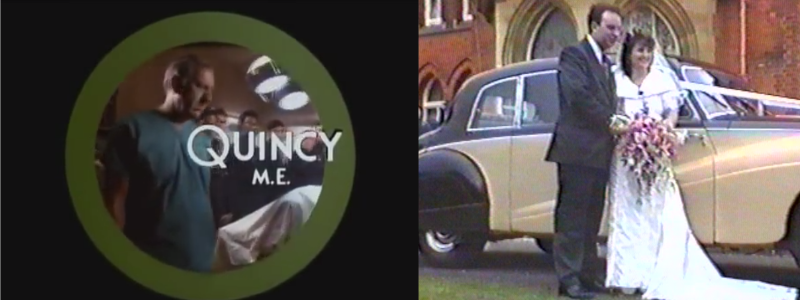Last week I wanted you to hold my hand through obsessing over a plot point in a sitcom from about 12 years ago. This week, I don’t. Please don’t help me with this one, please don’t answer the key question at the heart of something I’ve now been trying to find out for 25 years.
Actually, it’s 25 years tomorrow.
And what I don’t want to know, but I do, and I don’t, but I do, is about Quincy, M.E. Specifically, what happened at the end of season 2, episode 10, An Unfriendly Radiance, by Rudolph Borchert.
I can tell you, because I have back issues of Radio Times, that this aired on BBC1 at 11:05 on Wednesday 4 August, 1994, and that I was watching it while dressed in the best suit I have ever owned.
Tell me you don’t get dressed up for Quincy and then leave before the end.
Looking at that Radio Times listing, I’m struck by how The Rockford Files was on later (BBC1, 14:15-15:05, Find Me If You Can, season 1, episode 9, teleplay by Juanita Bartlett, story by Roy Huggins using his pen name of John Thomas James.)
The Rockford Files is much better than Quincy, but 14:15 on Wednesday 4 August, 1994, would be too late.
I’d be married by then.
I didn’t mention that the best suit I’ve ever owned had a flower in it. Or that I was sitting really carefully and resisting tea because I was being practical about not risking any spills, and because I was being really shaky.
No question, I’d have watched whatever was on, it just happened to be Quincy, and it just happened that Quincy was a moment of stillness on my wedding day. It was also Angela Gallagher’s wedding day, but I don’t think she got to have any stillness, and if she watched Quincy that morning, she’s never admitted it.
Also no question, even as ready as I was, even though it was impossible to leave until the car came, impossible as it was to think about anything else, I did get into that Quincy episode. And then I did get out of it again, no more than 25 minutes in.
So for all these years, there has been a bit of me that really wants to know if Quincy saved the day, and there’s more of me that likes not knowing.
Except.
I wanted to credit the writer, so I looked up the episode online –– and I’ve found the episode. It shouldn’t be there, it’s been illegally uploaded to YouTube, but it’s there.
It’s still not going to be the video I’m likely to watch this weekend.
And if I’m not kidding about how I think of this episode often, it’s really because I think of that moment and I think a lot of that day twenty five years ago. So long ago, so far away, and yet Angela Gallagher is still with me.
She might not be after she sees this image. It’s irresistible, it’s a Before and After image from the day. The alternative is that I show you how we looked then and now, but that won’t happen because while Angela would look wonderful in both, I wouldn’t in either. Even with that suit.
